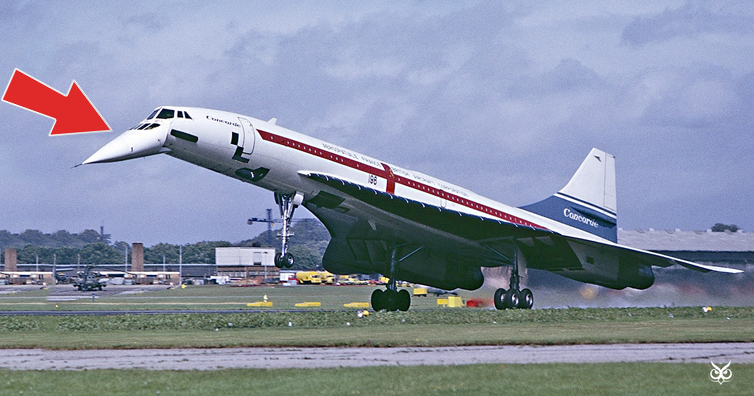Here at I’m A Useless Info Junkie we’ve talked several times about flying and aircrafts in particular. To name a few, do you remember the article about plane food and the fact that There’s A Reason Why Airplane Food Tastes So Bad? Or when we wrote about Why Jet Engines Have Spiral Shapes Painted On Them or that Airplane Oxygen Masks Aren’t Exactly Filled With Oxygen?
There’s a specific type of aircraft though that’s not covered even once on our website; the first ever supersonic passenger jet – the famous Concorde.
So, today we look at one of Concorde’s most distinct features: it’s droop nose. Why did the Concorde’s nose tilt down when no other plane is required to do so? (the article continues after the ad)
Well, the nose of the Concorde was tilted down for one simple reason: pilot’s visibility. You see, those kind of planes needed to be streamlined for supersonic flights, hence their nose had to be long and pointed in order to improve aerodynamic efficiency by reducing drag. That being said, during take off and landing, the Concorde had to fly in an extremely high angle of attack (meaning a high nose angle) as its delta wing produced lift at low speeds. Here’s a picture of a British Airways Concorde landing:
At these low speeds, the nose would have prevented the pilots from seeing the runway and/or other obstacles (notice the red triangle i painted on the picture?). So, engineers found a clever solution to overcome this issue.
Their idea was for the Concorde to have a nose that could be configured according to the stages of flight. That means that the drooping nose could be adjusted between take-off, supersonic cruises, landing and taxi. In fact, there were a total of four (4) different positions:
Position 1
Description: Nose and Visor fully retracted in up position
Used: During Supersonic cruise and when parked
* The Visor was made of special heat-resistant glass and was used as a protection for the windscreens while flying at supersonic speeds.
Position 2
Description: Nose fully up, Visor retracted into droop nose
Used: During short subsonic cruise (eg fly past) and windscreen cleaning
* This looks as if its the same with Position 1 but notice that the Visor is dropped down at this position.
Position 3
Description: Nose down at 5 degrees Visor retracted into droop nose
Used: For take off and taxi
Position 4
Description: Nose down at 12.5 degrees up, Visor retracted into droop nose
Used: For landings and taxi, although raised quickly to position 3 to avert damage
Now you know!
If you like what you read, then you will definitely love this one: If Airlines Banned Smoking, Why Do New Airplanes Still Have Ashtrays?
Photo: Wikimedia
Photoshop: I’m A Useless Info Junkie
Sources: Concorde SST: Droop Nose

